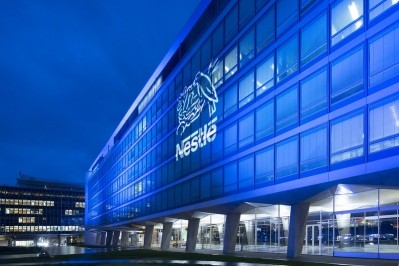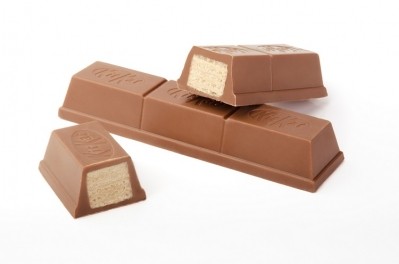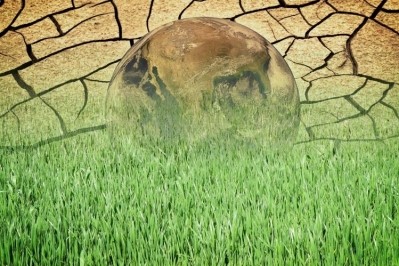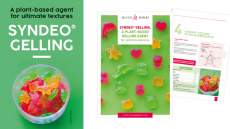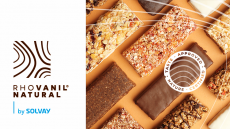Nestlé sets carbon target for KitKat: ‘We are reducing and removing emissions to reach carbon neutrality by 2025’
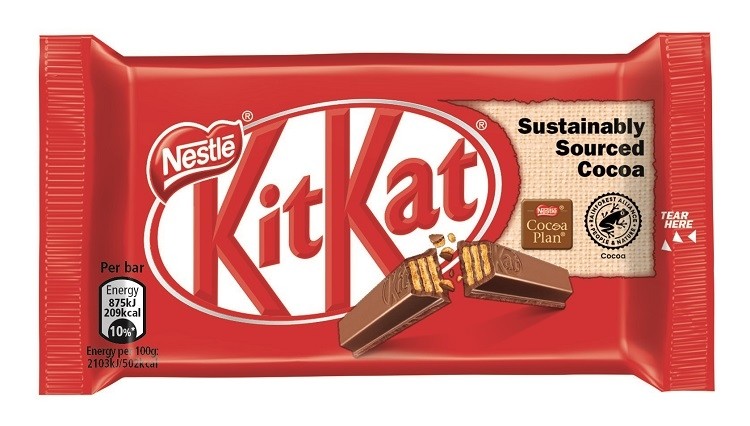
Nestlé-owned KitKat has pledged to become carbon neutral by 2025. To do this, the brand will be reducing emissions internally and removing emissions externally.
“We’re setting up new projects to reduce emissions within our value chain (insetting), building on existing work like planting shade trees,” a Nestlé spokesperson told FoodNavigator.
“At the same time, we’re investing in external projects to remove emissions (offsetting). This will involve both new and existing projects, all the while using the best external benchmarks like [carbon offset standard] Gold Standard to ensure genuine compensation.”
KitKat is measuring its current footprint data via a partnership with climate change and sustainability consultancy the Carbon Trust. The process, which includes measuring Scope 1, 2 and 3 emissions, will be completed later this year.
Spotlight on cocoa and milk
The dairy industry is responsible for a significant amount of greenhouse gas (GHG) emissions, largely due the production of livestock feed and methane production.
Cocoa’s carbon footprint is also far from negligible. According to Dave Reay’s 2019 publication Climate-Smart Food, an average 40g bar of milk chocolate carries a carbon footprint of around 200g. This rises nearer to 300g for a bar of dark chocolate, due to the extra cocoa it contains.
It is unsurprising, therefore, that most of KitKat’s emissions occur when producing its ingredients, like cocoa and milk.
The brand aims to reduce these emissions ‘as much as possible’ through initiatives like restoring forests and supporting a transition to regenerative agriculture. One such initiative will see Nestlé help farmers plant five million shade trees where it sources its cocoa by 2025.
Manufacturing and distribution
KitKat will also look further down its supply chain to include manufacturing and distribution in its aim of reducing emissions generated by more than 50%.
Accelerating the transition to renewable electricity is one area in which Nestlé is working to reduce KitKat’s environmental footprint. At its factories, the company has already reduced the energy required to produce KitKat by more than 40% per tonne of product since 2000.
Renewable electricity is being used at some KitKat manufacturing sites, and Nestlé said it will continue to find new ways to ‘end dependency on fossil fuels’ and ultimately, use 100% renewable energy for all KitKat factories before the end of 2025.
For any emissions that cannot be eliminated, Nestlé will invest in offsetting based on ‘natural’ climate solutions.
Will we see carbon labels on-pack?
The Carbon Trust has teamed up with other food companies, such as meat alternative brand Quorn, to provide carbon footprint data. In Quorn’s case, the brand is using the data to introduce carbon labelling on-pack for some of its product.
Should we expect to see similar carbon labels on KitKats? “We can’t confirm how we will communicate the CO₂e numbers for KitKat just yet,” the spokesperson told this publication, “we will agree on this as part of the verification process with the Carbon Trust.”
Concerning KitKat’s communication about its progress towards climate neutrality, the spokesperson said Nestlé will update on its progress over the next four years by providing tangible examples of its work. “We will do this across a variety of owned brand assets.”
KitKat is not the first Nestlé brand to commit to carbon neutrality. Garden Gourmet and Nespresso have pledged to achieve this goal by 2022. Nestlé will make its global water category carbon neutral by 2025, prioritising international brands Perrier, S.Pellegrino, Acqua Panna and Vittel to achieve carbon neutrality by 2022.
The company told us it expects more brands to follow suit, which aligns with Nestlé’s commitment to reaching net zero emissions by ‘no later than 2050’, throughout its value chain.

